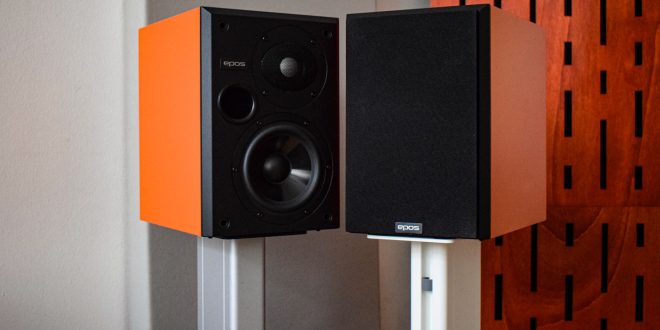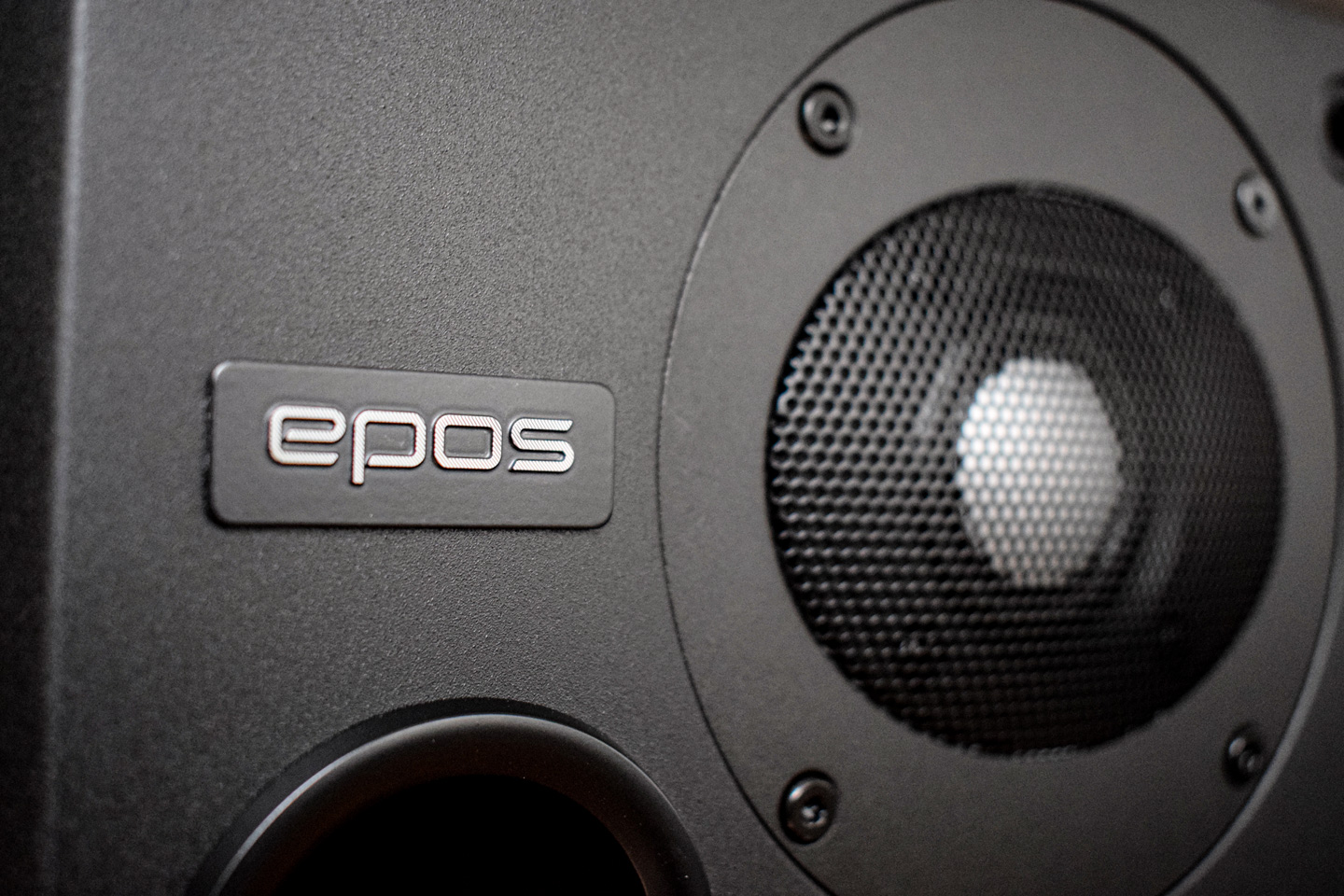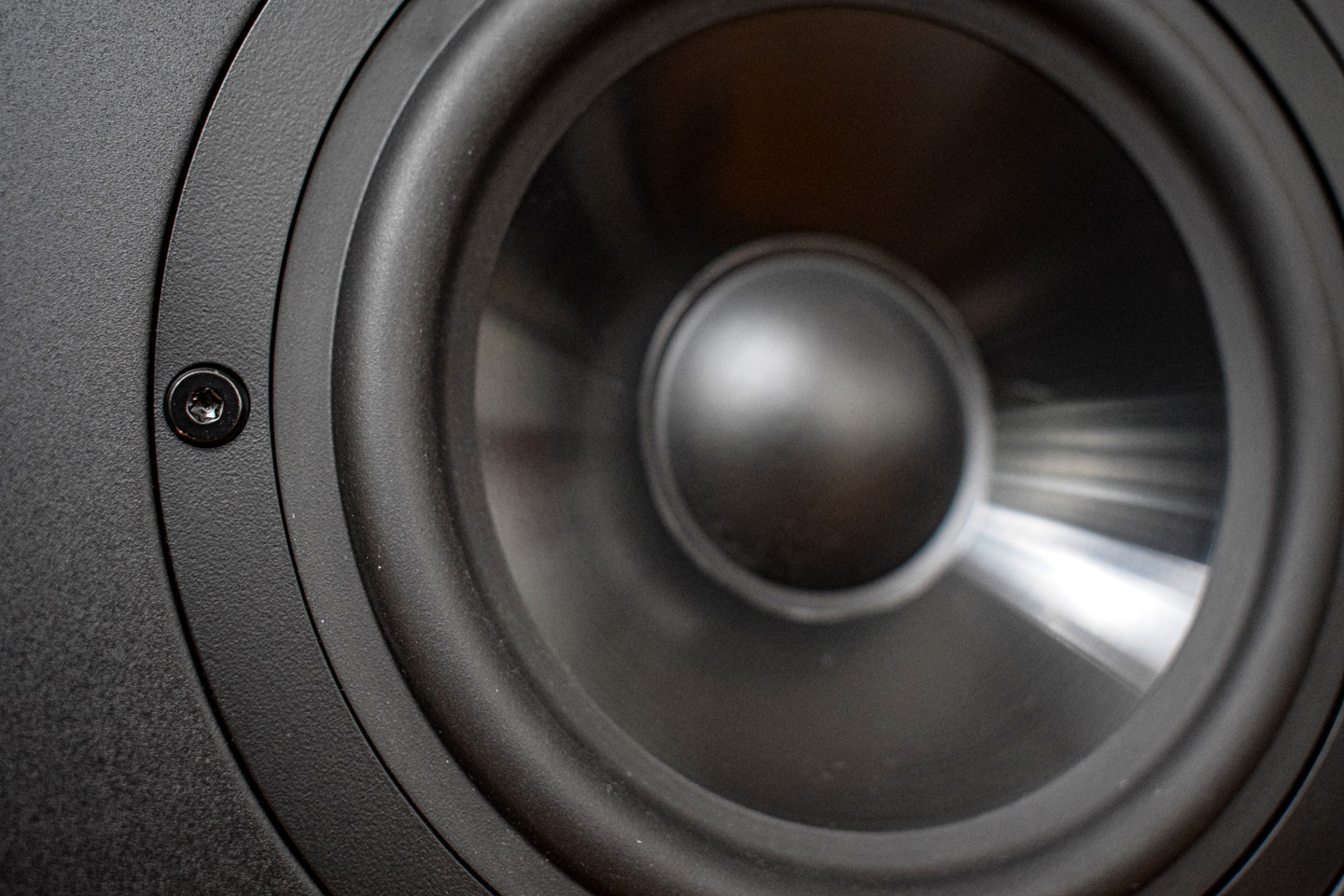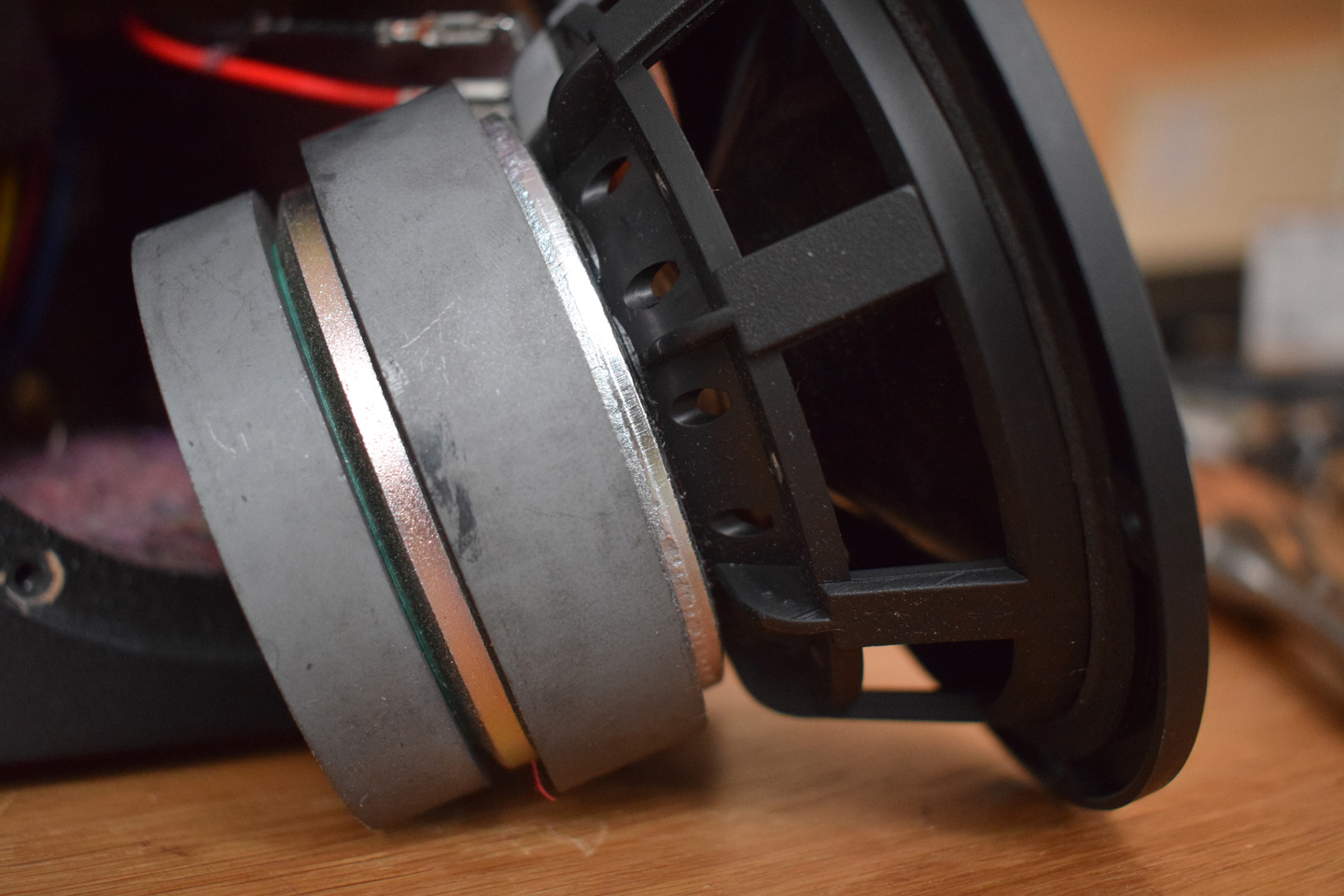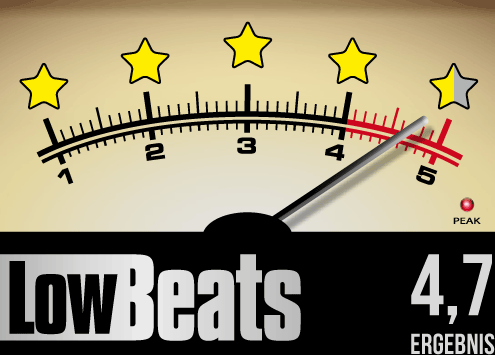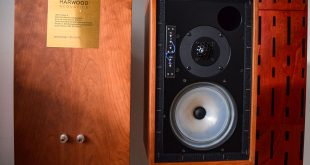When Karl-Heinz Fink launches a new loudspeaker, you should listen up. The well-traveled developer has already delighted us with a number of audiophile delicacies – just think of the impressive Borg, which is still LowBeats reference. But now the master has outdone himself with the small Epos ES-7N. It sounds outstandingly good and has a circuit for clever location adjustment. This makes it the highlight of this class.
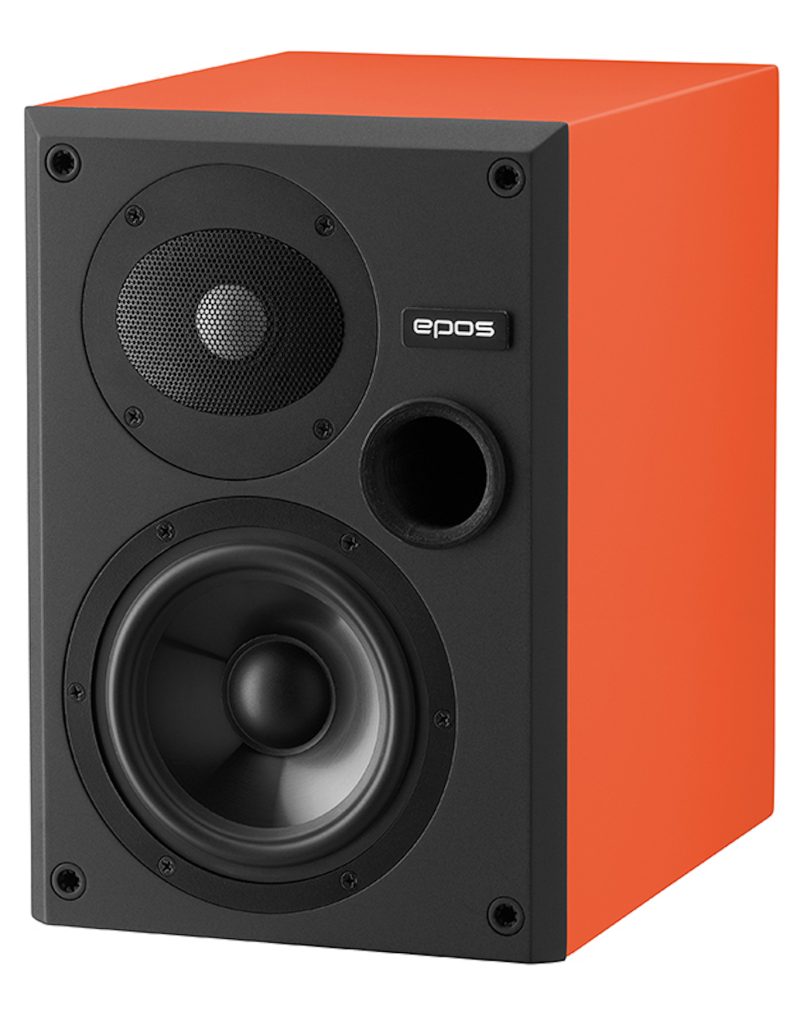
I have been testing loudspeakers for well over 30 years now and I can still get wonderfully upset about the fact that manufacturers also tune their compact speakers for free placement. This is nonsense, because the reality is different in many places: Many music lovers don’t even have the space for free-standing placement and buy compacts for the very reason of placing them on a sideboard or shelf – even though many suspect that placing them near a wall or actually on a shelf has many disadvantages in terms of sound. For example, the bass/base tone can be boosted considerably if the speaker is not placed on a shelf. Whenever possible, we at the LowBeats editorial team therefore recommend placing compact speakers on a stand – this promises clear bass and better spatiality.
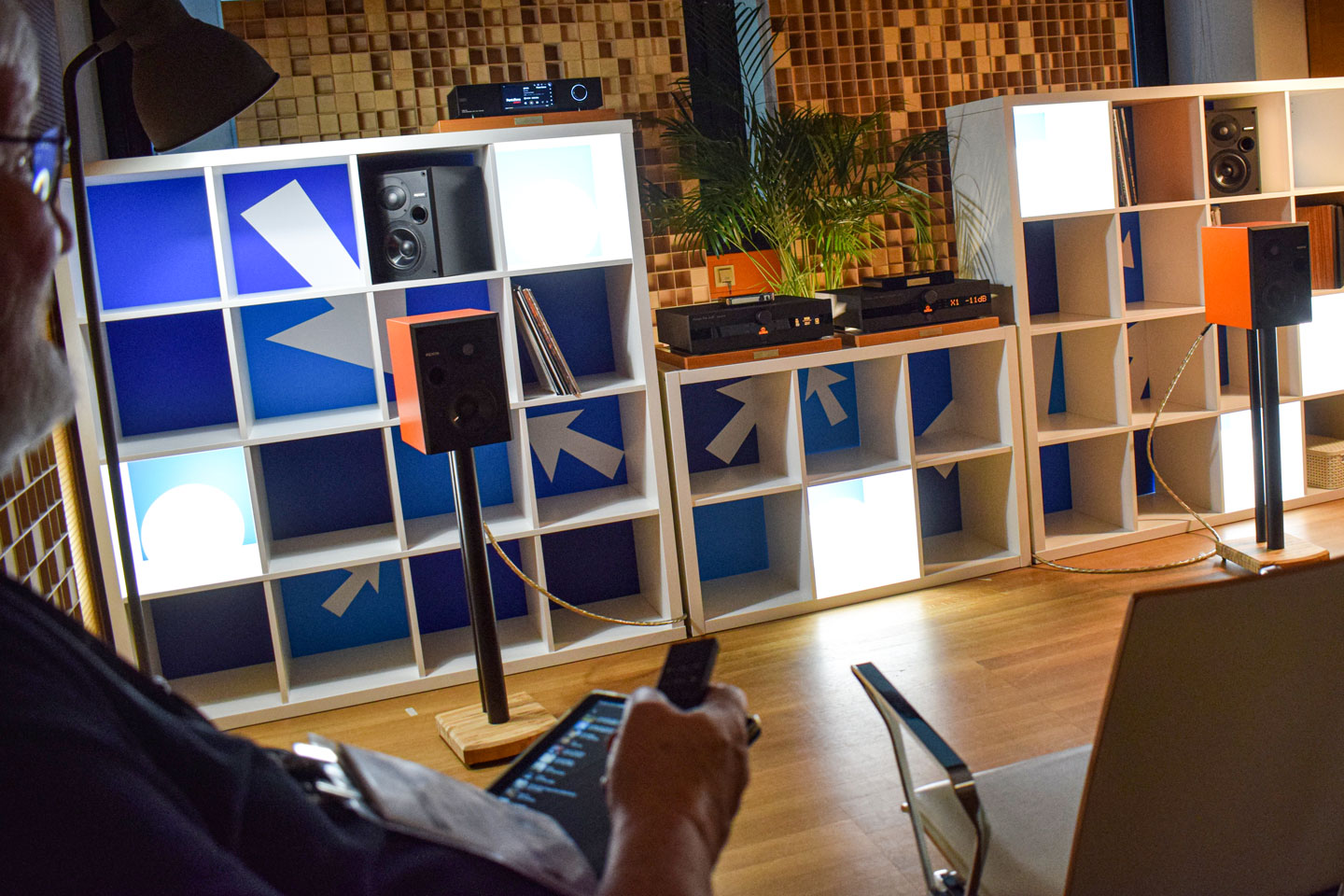
Karl-Heinz Fink has now solved the placement dilemma both simply and ingeniously: his new Epos 7N has switchable transmission curves for both placement variants.
The structure of the Epos ES-7N
First of all, the new Epos is a really beautifully designed, very compact 2-way construction in a bass reflex cabinet. The walls are made of 2 x 8 mm thick MDF with a viscous layer in between. Fink has already used this double construction in previous designs; it has proven to be significantly better in terms of stability and sound permeability (actually a major problem with loudspeakers) than continuous walls of the same thickness. The baffle, which is particularly strongly stimulated by the bass-midrange driver, even reaches a thickness of 2.4 centimeters thanks to the combination of 8 and 16 millimeter thick panels – which also explains the weight of 7.6 kilos per speaker.
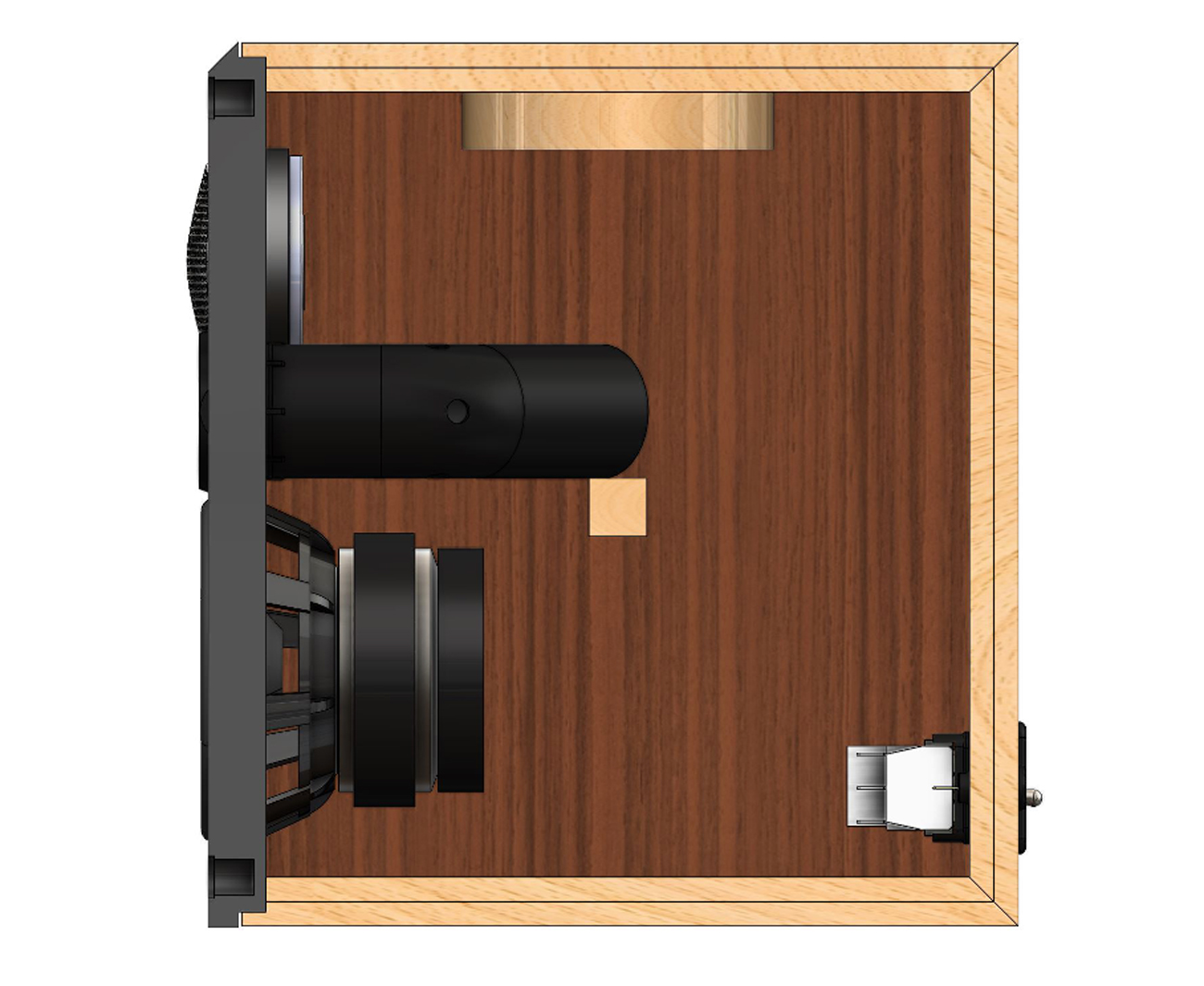
As always, Fink has also focused on the housing cover: because previous tests (some of which I was present at) have shown that the cover can drastically impair the sound image due to vibrations and sound permeability, the upper part is reinforced again against vibrations.
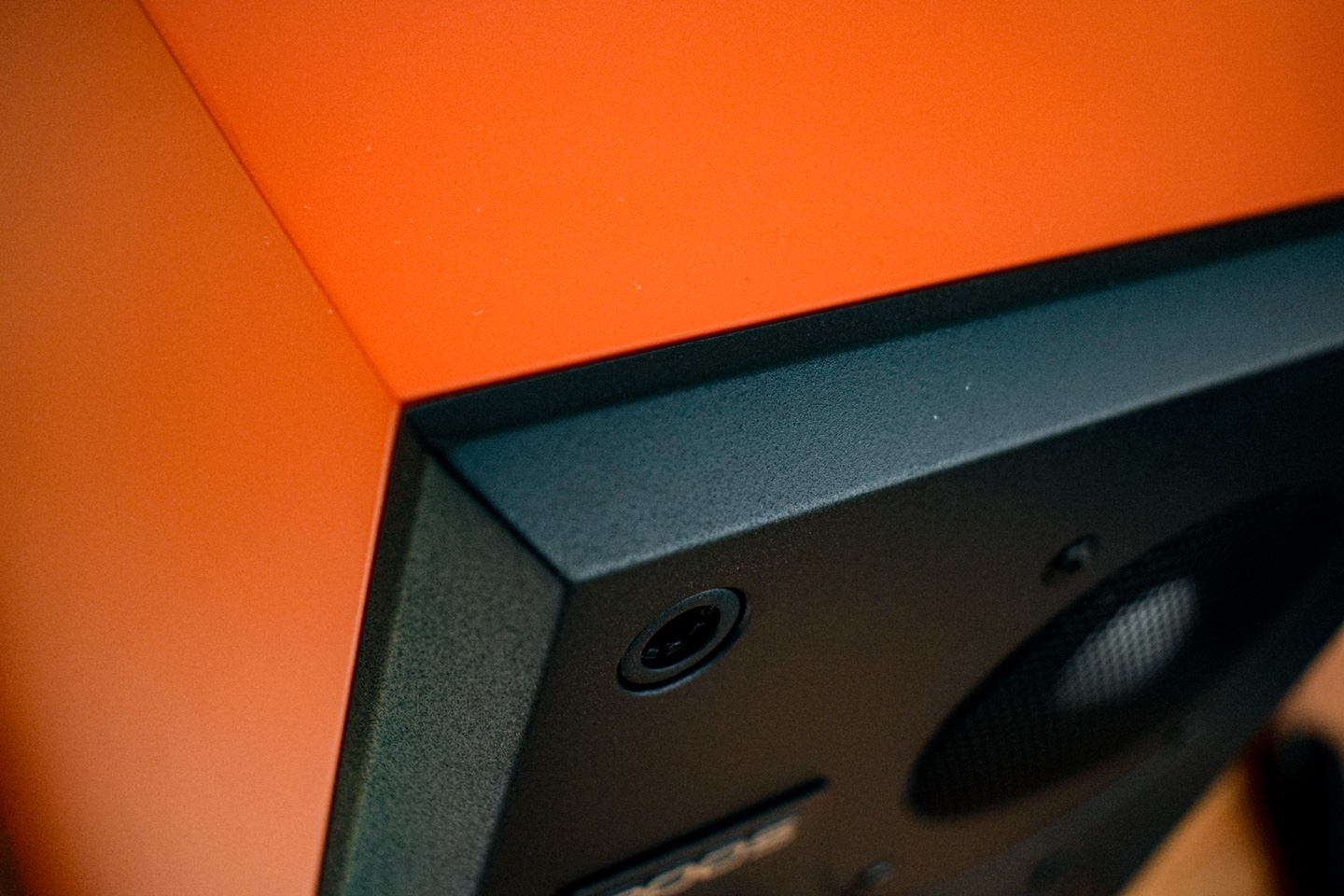
Fink leaves nothing to chance when designing the enclosures. Because his development office (which works for companies from all over the world) is better equipped than almost all other hi-fi manufacturers, elaborate, laser-supported vibration analyses are practically a matter of course. Just like the right drivers, which Fink develops himself – simply because he can and has the resources to do so.
He made it easy for himself with the tweeter: in the Epos 7N, he simply uses the same type with an aluminum alloy dome tweeter that is also used in its larger sister, the ES-14N. The bass-midrange driver with a diameter of 13 centimeters is new, but has the same mica-filled polypropylene cone as the bass-midrange driver in the Epos 14N. However, the Epos 7N model features a 30 mm voice coil and a double magnet for high power handling and efficiency.
A question of position
A look at the rear brings us to the real highlight of the Epos 7N: the adaptability between (largely) free and shelf positioning, which the inclined listener can set using a toggle switch.
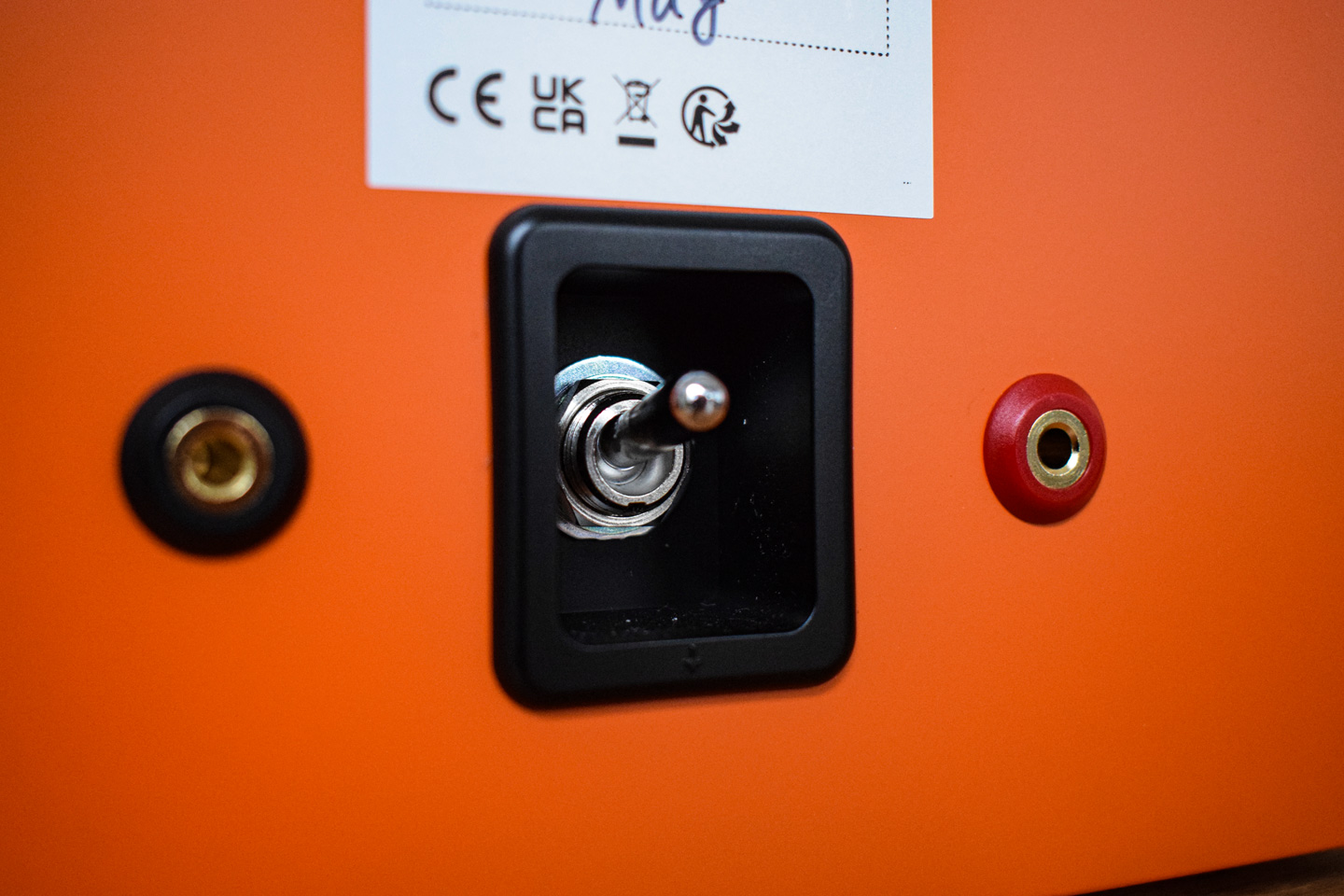
For this purpose, the playback curve of the Epos 7N is gently raised by 3 decibels from around 250 Hertz compared to the “normal” free-standing level. That makes sense. This is because the adjacent rear walls (sideboard surfaces or the neighboring areas on the shelf) increase the level in the bass and fundamental tone by up to six decibels. Fink counteracts this (usually undesirable) increase in bass with a very linear bass response and its adaptation. The measurements show the influence of the two circuit variants in the free field:
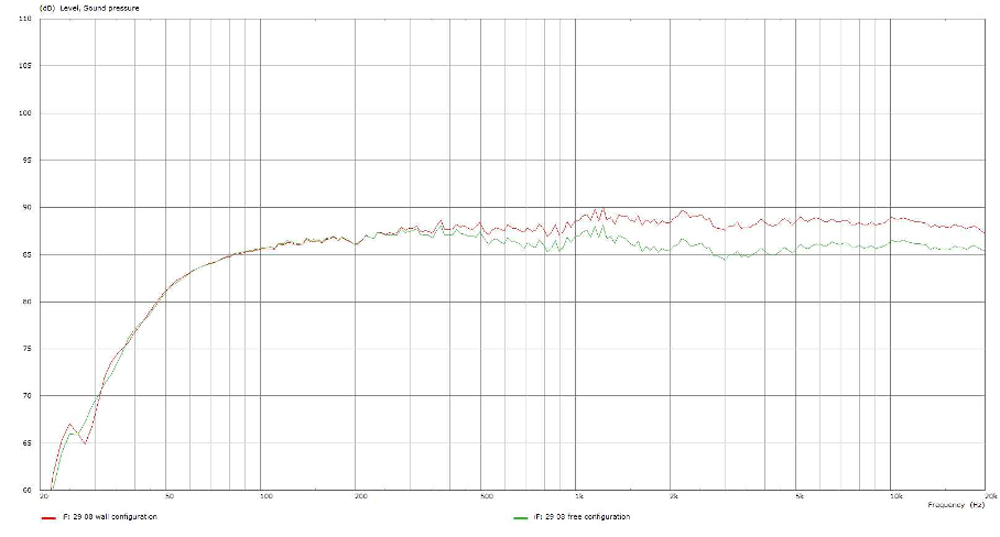
However, the measurements not only show the differences between the settings, but also that Fink has tuned the Epos 7N in the bass in a pleasingly linear and clean way. Especially in this class, people like to cheat a bit of volume with small or large bass boosts…
Fink has implemented this trick with a double tapping of the bass coil: Because the inductance has not yet reached its full value with the second tap, the lowering of the transmission curve towards the mid-high range begins later, and the mid-range level is higher.
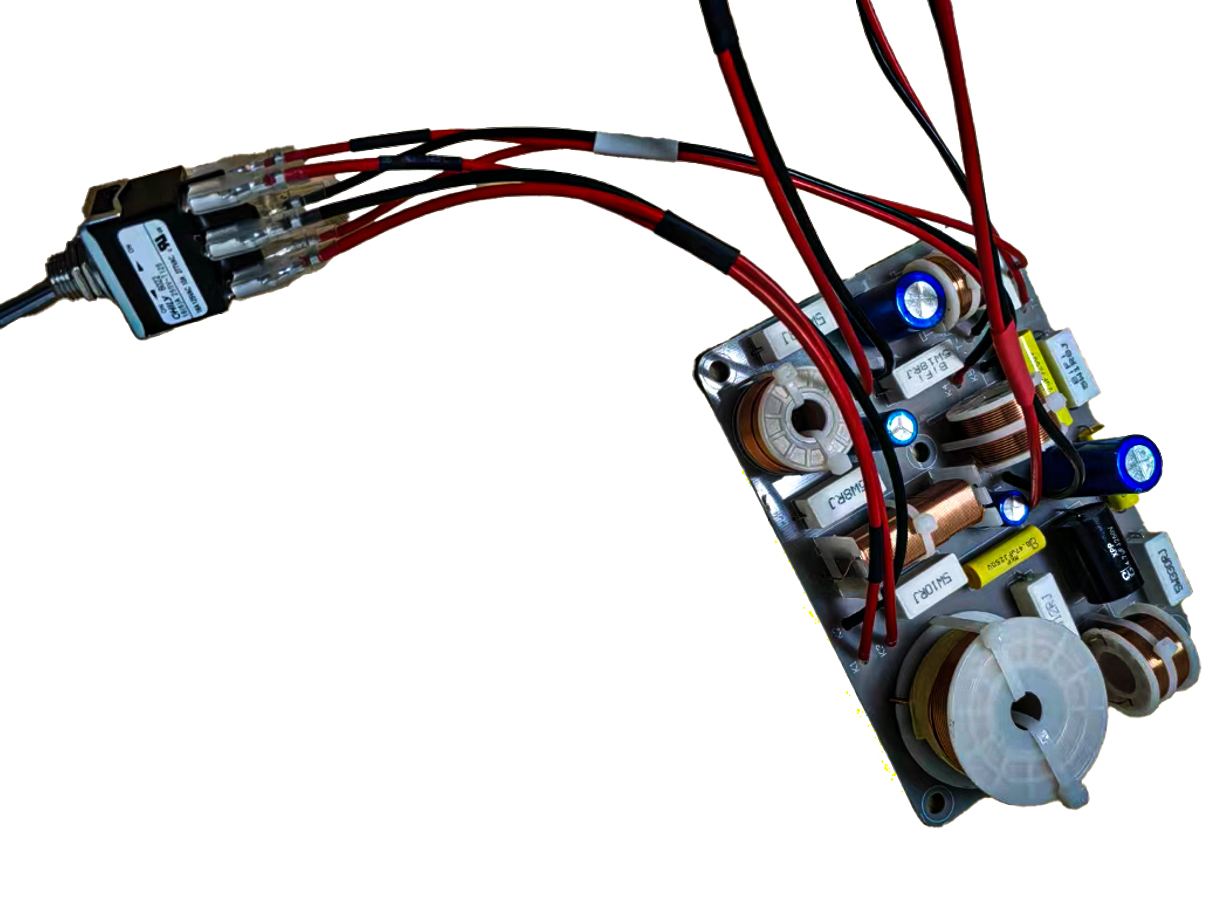
In practice…
…Fink’s matching curve worked really well. I had the Epos 7N both on the sideboard directly on the rear wall, but also in the crammed IKEA shelf (KALLAX) with its LP-compatible compartments. Considering the incredibly high number of KALLAXes sold, it is a mystery to me anyway why there is so little KALLAX-compatible hi-fi. But that’s another question.
With its height of 29 centimeters, the Epos 7N fits perfectly – so well that even better decouplers than the rubber feet supplied would fit. We used the Leak Stereo 230 as an amplifier, which also fits due to its midi width – and incidentally made an excellent sounding team with the Epos…
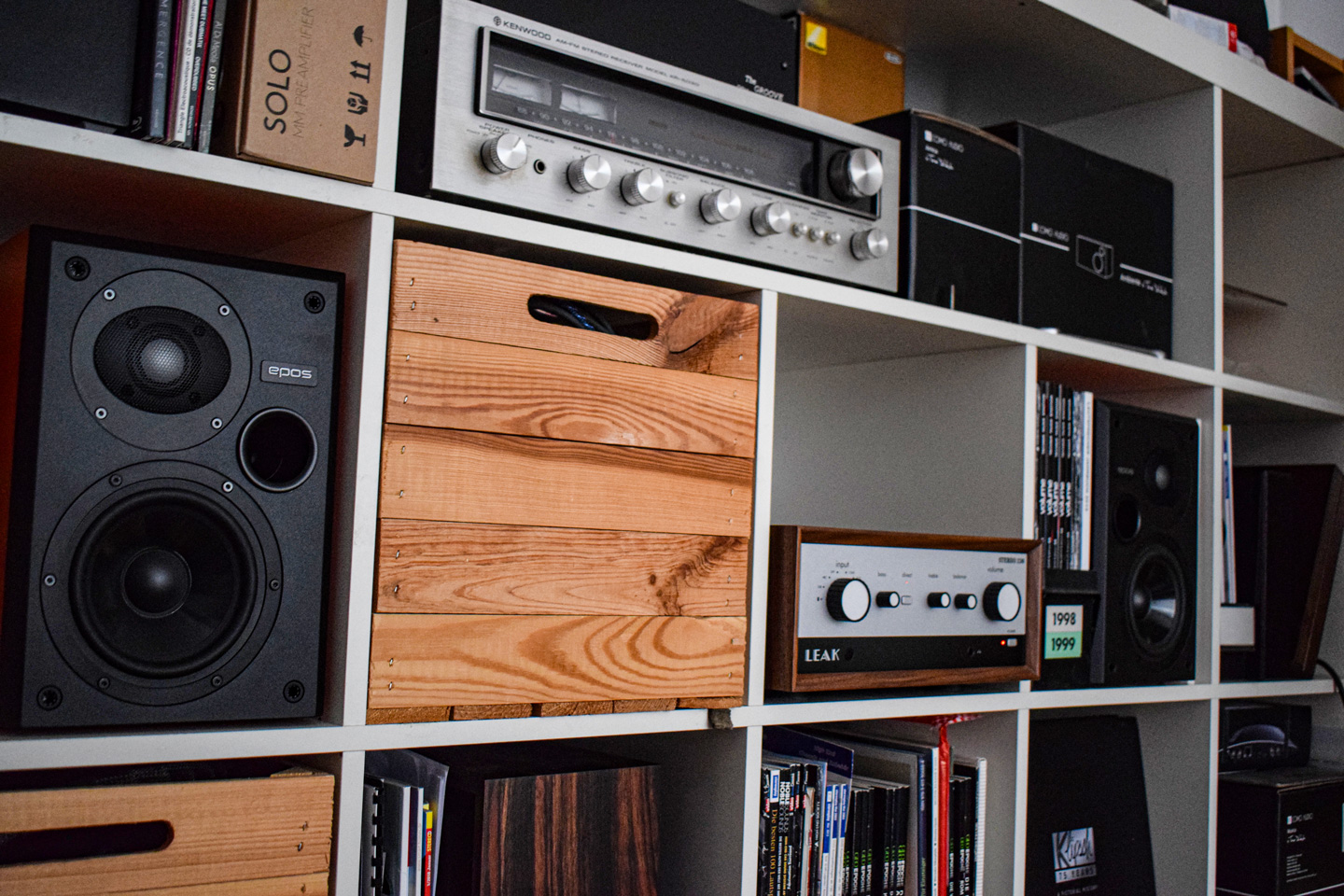
To cut a long story short: With such a complete “installation” of the loudspeaker in the shelf, which leads to the adjacent surfaces enlarging the baffle of the speaker many times over, you naturally don’t have the depth staggering as with a largely free placement. However, the usual bass/basic tone problems that are almost unavoidable with “normal” loudspeakers when set up in this way were completely absent with the Epos with the corresponding switch position. I was really amazed at how good and how finely detailed and precise the sound image remained even in the fundamental tone under these difficult conditions. Speech intelligibility, finely decaying guitar strings, energetic bass drum hits: this was audiophile high culture from the KALLAX – truly exceptional. And what was already convincing on the shelf became even better on the sideboard (and only when the speakers were placed freely). But more on that later.
First of all, it is important to note that Fink’s adaptation of the small Epos to the layout works magnificently. But of course, with this origin, it can be assumed that the “rest” is also excellent. This also applies to the electrical behavior. As almost always, Fink linearizes the impedance curve of his models.
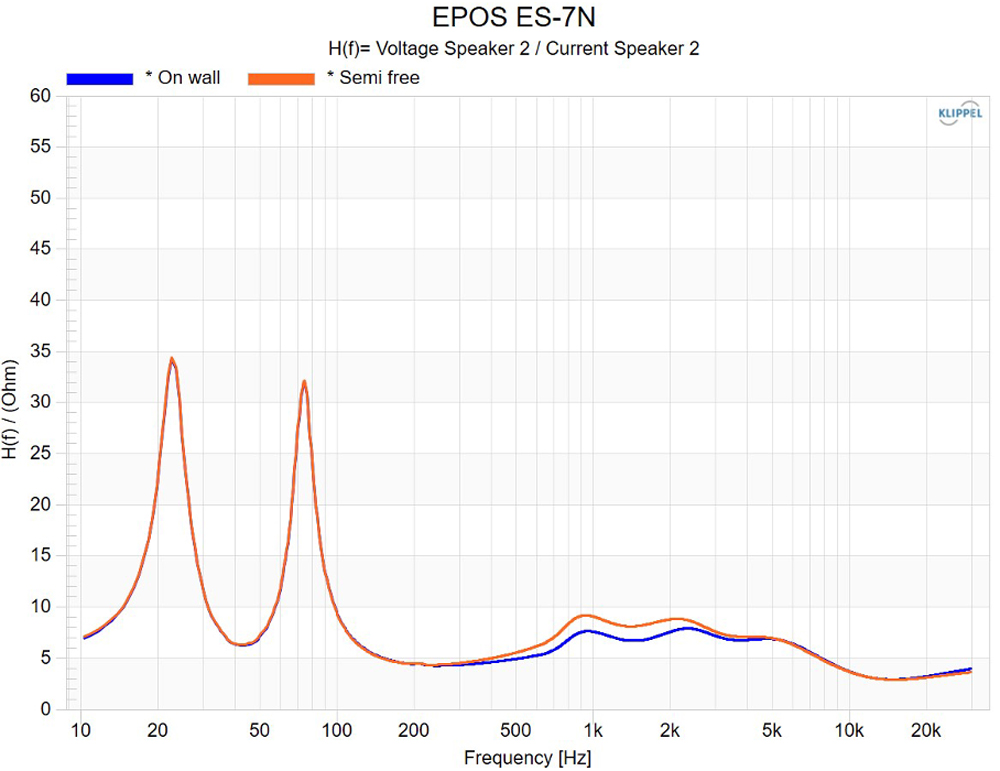
In this case, this was important for matching, but is also a pleasing side aspect for amplifiers. Even low-power tube amps such as the 300B Fezz Audio Mira Ceti amplifier, which we used for almost every test, had no problems at all with the Epos 7N. And this combination also sounded enchanting and had amazing level reserves, especially on the shelf: with the help of the bass-supporting surfaces on the full shelf, the Epos 7N achieves a good 89 dB efficiency. That’s really a lot and enough to get almost 100 dB of sound pressure from the Mira Ceti’s less than 10 watts.
The listening test…
…was carried out in the classic setup – i.e. on the stand with a good 40 centimeters distance to the rear wall. In order to lure the small Epos out of its reserve in terms of level, most of the listening tests were carried out on the new Luxman L-509Z, which already showed in these preliminary tests that it is without question one of the best 10,000-euro amps in this galaxy.
The small Epos immediately amazed us with its incredibly lively mid-range, which was balanced, open and effortlessly gave the impression of a much more expensive loudspeaker. The speech intelligibility of the little ones – for example in Dota Kehr’s magnificent work “Wo soll ich suchen…?” (Where should I look…?) was convincing without any restrictions, every micro-detail of the voice could be heard.
But it became truly magnificent when it came to plucked basses, bass drums or even the tuba. I can’t remember hearing such complexity and accuracy in this price range. And all this – if you please – with a well-tempered overall tuning in which everything is very fine and harmonious.
In comparison with the (three times more expensive) Dynaudio Heritage Special, some differences quickly became apparent. The much larger Dane scored points with its significantly richer bass, more generous spatial imaging and somewhat “nicer” vocal reproduction. However, the Epos’ wonderfully fine and tidy mids continued to speak in its favor. Although the sound was not quite as splendid as with the Dynaudio, it still seemed a little more lively and multi-faceted.
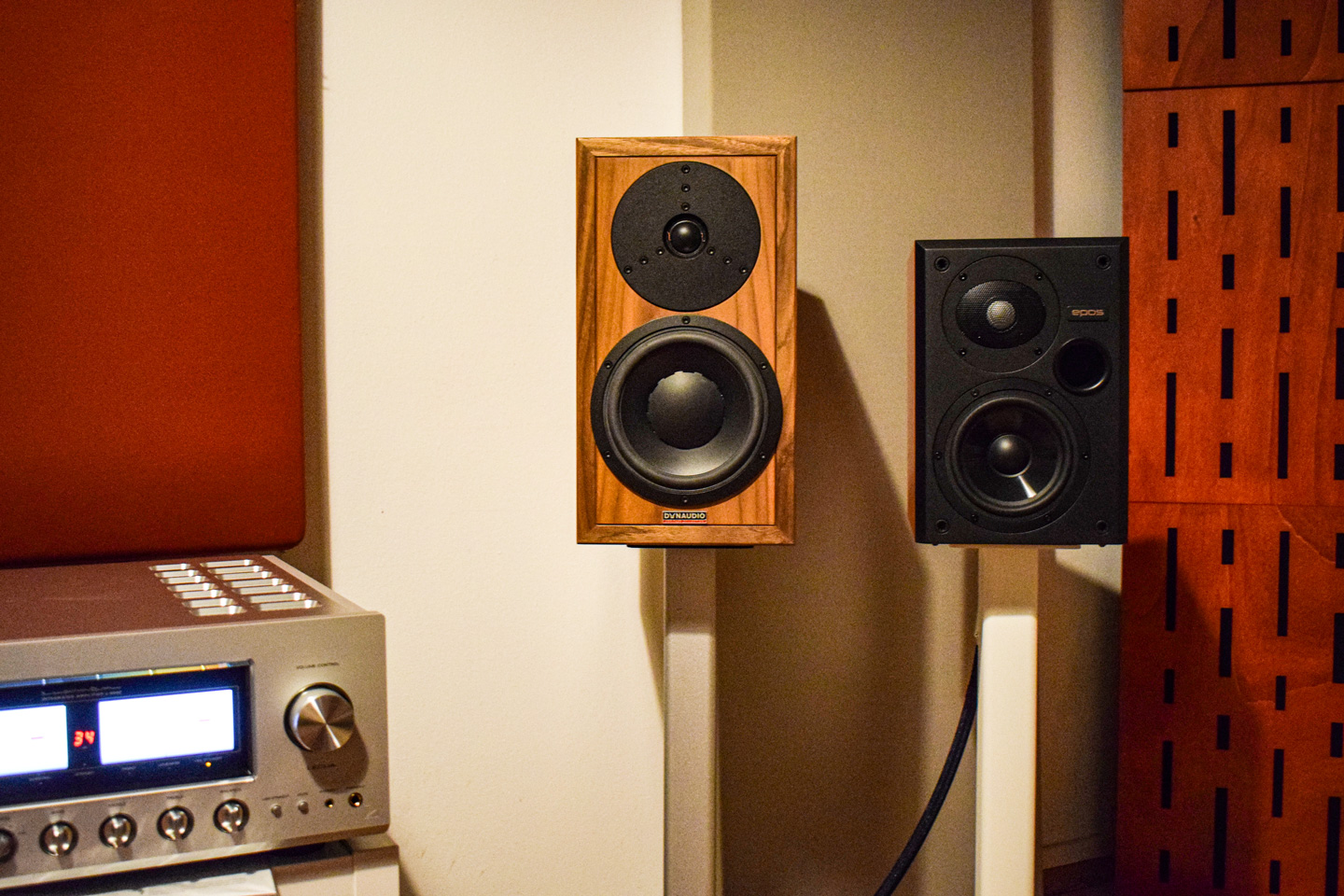
Of course, a comparison had to be made with the BBC legend LS 3/5a, which is also part of the LowBeats inventory and is available in the Musical Fidelity version for 2,500 euros. The venerable LS 3/5a certainly has its merits and still creates a great stage and very good vocal reproduction.
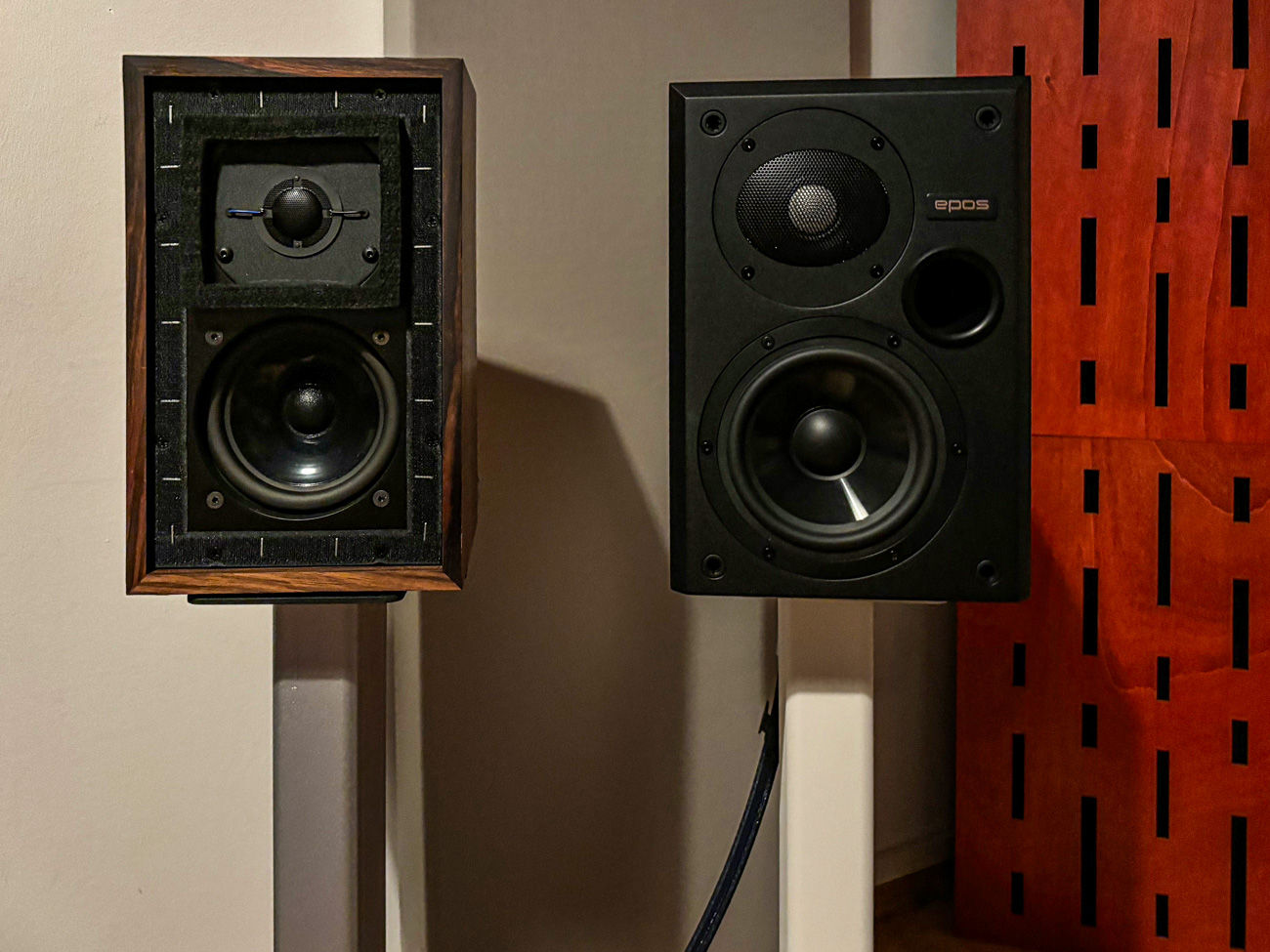
However, this comparison clearly showed that a lot has happened in terms of speaker development in recent years. The 7N was not only much more balanced and precise in the bass: its lively reproduction and the perceived much higher fine and coarse dynamics actually made the charming and cozy sounding replica legend look old.
Conclusion Epos 7N
The new Epos is more than just an all-round well-made compact speaker. Electrically, it is undemanding and can cope with almost any amplifier. The sound is almost perfect and will appeal to any music lover who likes a fresh, balanced reproduction.
But the definitive treat is this toggle switch on the back for location adjustment. For all music lovers who only have space for their speakers in or on the shelf, the Epos 7N is the perfect solution. When I think about how many people in my circle of friends alone could finally achieve audiophile-satisfying reproduction despite a lack of space…
But, I must emphasize this once again: Under optimal conditions, of course, the little one sounds even better and raises the bar in the class up to 2,000 euros a good bit higher.
One more note: We had one of the first production samples in the test. It will probably be the end of April before the Epos 7N actually appears on the market.
Rating
Sound QualityUsabilityBuild QualitySummary |
| The rating always refers to the respective price category. |
| | Wonderfully harmonious, lively, audiophile sound |
| | Precise, clean bass |
| | Also plays excellently on the shelf thanks to customization |
| | Amazingly high efficiency, especially on the shelf |
Distribution:
IDC Klaassen oHG
Am Brambusch 22
44536 Lünen
www.idc-klaassen.com
Price (manufacturer’s recommendation):
Epos 7N: 2.000 Euro
Technical data
| Epos 7N | |
|---|---|
| Concept: | 2-way passive speaker (bass reflex) |
| Configuration: | T: 1 x 28 mm metal dome tweeter, W: 1 x 13.0 cm polypropylene cone |
| Efficiency (2.83 V/m): | Free installation: 86 dB, shelf installation: 89 decibels |
| Nominal impedance: | 4 Ohm |
| Set-up tip: | free-standing, on a stand or on a sideboard/shelf |
| Colors: | Walnut, white, black, orange |
| Dimensions (H x W x D): | 29,0 x 20,0 x 27,0 cm |
| Weight: | 7,6 Kilo |
| All technical data | |
Teammates and opponents:
Test Vollverstärker Musical Fidelity A1
Test Retro-Vollverstärker Leak Stereo 230: sieht nur aus wie von gestern …
Test Kompaktbox Harwood LS 3/5a: der BBC-Klassiker für unter 1.000 Euro
Test Dynaudio Heritage Special: in der Tradition der großen Sondermodelle
More from Epos:
Test Kompaktbox Epos 14N: „N“ für höchste Natürlichkeit



